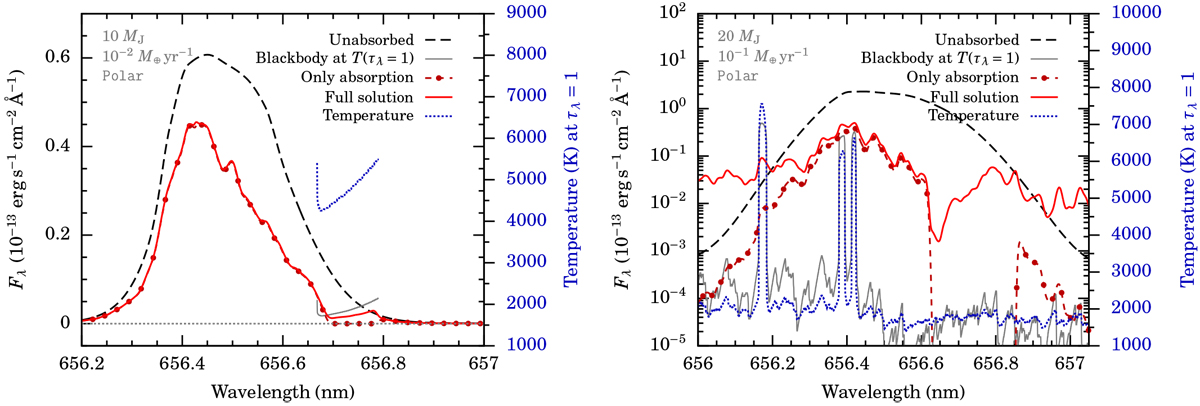Fig. A.1

Download original image
Full solution to the radiative transfer approximation (Equation (11)) including the emission term (see Equation (A.2)) compared with the approximate, absorption-only solution (Equation (14c)). We show the flux leaving the planet (dashed black line), the solution taking only absorption into account (dark red dashed line with dots), and the full solution (pale red full line), as well as the source function (blackbody intensity) at the location where τλ = 1 radially inwards (grey line), for those wavelengths where τλ = 1 is reached. The temperature of the blackbody there is shown against the right axis (blue dotted line). Left panel: Case of Figure 4. The strong preshock absorption at the Doppler-shifted H α resonance near the planet is filled in somewhat by the emission in the accretion flow, almost to the level of the blackbody at τλ = 1, roughly according to the Milne–Barbier–Unsöld relationship. Right panel: Case of polar accretion for Ṁ = 3 × 10−4 MJ yr−1, Mp = 20 MJ for the cold-population radius fit (Rp = 3.4 RJ). Outside of the line centre, the outcoming intensity is much higher than the source function at τλ = 1 and thus the full solution is not roughly the sum of the absorption-only curve and the source function at τλ = 1.
Current usage metrics show cumulative count of Article Views (full-text article views including HTML views, PDF and ePub downloads, according to the available data) and Abstracts Views on Vision4Press platform.
Data correspond to usage on the plateform after 2015. The current usage metrics is available 48-96 hours after online publication and is updated daily on week days.
Initial download of the metrics may take a while.


